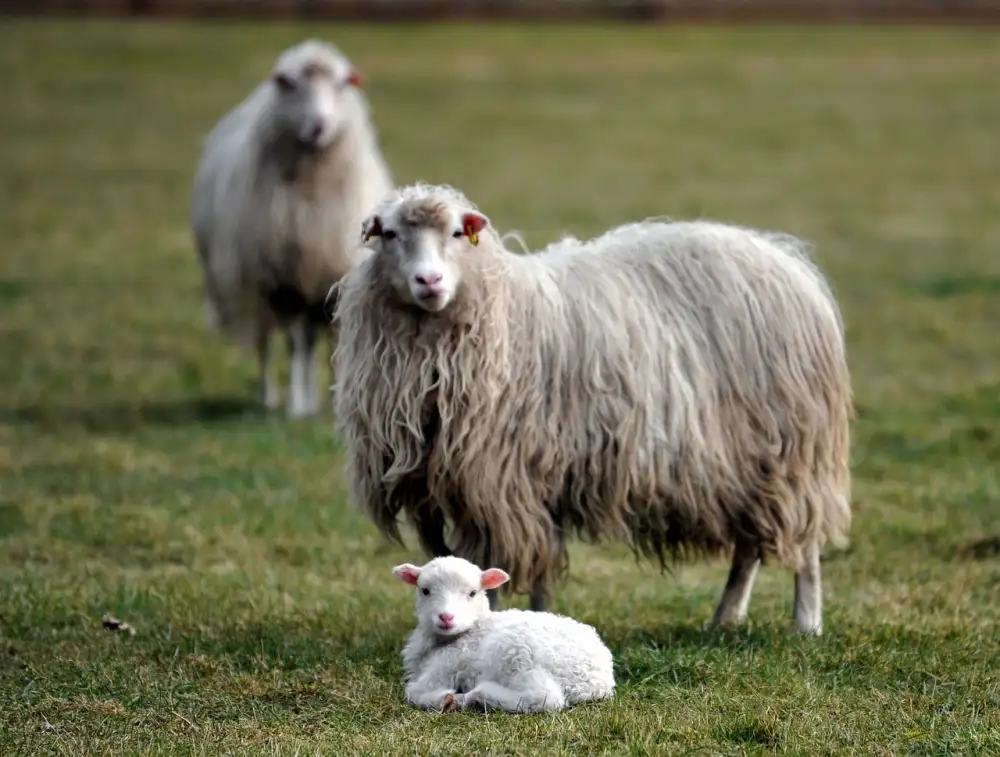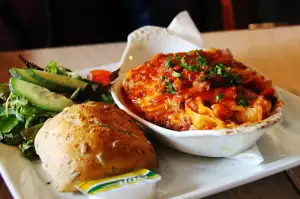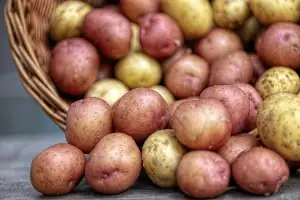Unlock the Flavors of Tradition: Exploring the Exquisite Seder Dinner for Passover

The Seder Dinner is a significant and cherished tradition in Jewish culture, observed during the holiday of Passover. This special meal brings together family and friends to commemorate the liberation of the Israelites from slavery in ancient Egypt. The word "Seder" means "order" in Hebrew, referring to the specific sequence of rituals and symbolic foods that are enjoyed during this festive occasion. Join us as we delve into the flavors and customs of this remarkable culinary experience, unlocking the richness of tradition that has been passed down through generations.
Significance of the Seder Dinner in Jewish Culture
The Seder Dinner holds immense significance in Jewish culture as it commemorates the liberation of the Israelites from slavery in ancient Egypt. It is a time for families and communities to come together, retell the story of Exodus, and pass down traditions from one generation to another. The Seder Dinner serves as a reminder of the hardships faced by the Jewish people and their journey towards freedom. It is a celebration of resilience, faith, and gratitude for the blessings of freedom.
Traditional Foods Served During the Seder Dinner
The Seder dinner is a feast that showcases an array of traditional Jewish dishes, each with its own symbolic significance. One of the most iconic foods served during the Seder is matzah, unleavened bread that represents the haste in which the Israelites left Egypt. It is customary to eat bitter herbs, such as horseradish, to remember the bitterness of slavery.
Another essential component of the Seder plate is charoset, a sweet mixture made from fruits and nuts. This symbolizes the mortar used by the Jewish slaves to build structures in Egypt. The roasted shank bone or lamb shank represents the Paschal lamb sacrificed during ancient times.
Eggs are also commonly included on the Seder plate, symbolizing new beginnings and rebirth. They are often dipped in saltwater to represent tears shed during slavery. Additionally, parsley or another green vegetable is dipped in saltwater to symbolize spring and renewal.
Other traditional dishes served during the Seder include gefilte fish, a poached fish dish; brisket, a slow-cooked beef dish; and tzimmes, a sweet carrot and fruit stew. These dishes not only provide sustenance but also connect participants to their cultural heritage and create a sense of unity among family and friends gathered around the table.
The variety of flavors and textures found in these traditional foods adds depth to the culinary experience of the Seder dinner. Each bite tells a story steeped in history and tradition, allowing participants to connect with their ancestors while savoring delicious flavors passed down through generations.
Preparation and Rituals Involved in the Seder Dinner
The Seder dinner is not just a meal, but a meticulously planned event filled with rituals and symbolism. The preparation begins well in advance, with families cleaning their homes to remove any trace of leavened bread, known as chametz. This represents the removal of arrogance and ego from their lives.
On the evening of Passover, the table is set with a special Seder plate that holds symbolic foods. Each food represents an aspect of the Jewish story of liberation from slavery in Egypt. The roasted lamb shank bone signifies the Paschal sacrifice, while bitter herbs represent the bitterness of slavery.
The unleavened bread, called matzah, is central to the Seder dinner. It symbolizes both haste and humility, as it recalls the hurried departure from Egypt when there was no time for bread to rise. Three pieces of matzah are placed on a plate – one representing God's commandments, another representing the priests and Levites, and the third representing all other Israelites.
During the Seder dinner, participants follow a specific order called Haggadah. This book guides them through prayers, songs, and readings that retell the story of Exodus. The leader asks questions to engage everyone at the table in discussion about freedom and redemption.
One of the most beloved rituals during the Seder dinner is searching for hidden matzah called afikoman. Children enthusiastically search for this hidden piece of matzah while adults negotiate its return for a small reward. This tradition adds an element of fun and excitement to the evening.
As each ritual unfolds during the Seder dinner, participants are reminded of their ancestors' journey from slavery to freedom. Through these meaningful rituals and traditions, Jewish families come together to honor their history and pass down their cultural heritage to future generations.
Variations and Modern Adaptations of the Seder Dinner
While the Seder dinner is steeped in tradition, there have been some modern adaptations and variations to accommodate different dietary preferences and lifestyles. One such adaptation is the inclusion of vegetarian or vegan options for those who choose not to consume meat or animal products.
In recent years, there has also been a rise in gluten-free and dairy-free versions of traditional Passover dishes. This allows individuals with dietary restrictions or allergies to still partake in the Seder dinner without compromising their health.
Another modern adaptation is the incorporation of global flavors into traditional dishes. Many people now experiment with different spices, herbs, and ingredients from various cuisines to add a unique twist to classic Passover recipes. This fusion of flavors adds excitement and diversity to the Seder table.
Furthermore, some families have started incorporating new rituals or activities into their Seder dinners. For example, they may include interactive games or storytelling sessions that engage both children and adults in learning about the significance of Passover. These additions help make the experience more enjoyable and memorable for everyone involved.
It's important to remember that while these adaptations can enhance the Seder dinner experience, they should be done respectfully and in accordance with Jewish traditions. The essence of the Seder dinner lies in preserving its historical significance while embracing new ways to celebrate it.
By embracing these variations and modern adaptations, we can ensure that the Seder dinner remains relevant and accessible to a wider range of people while still honoring its rich cultural heritage.
Tips for Hosting a Memorable Seder Dinner
1. Plan ahead: Start your preparations well in advance to ensure a smooth and enjoyable evening. Make a checklist of all the necessary ingredients and items you will need.
2. Create a meaningful atmosphere: Set the table with care, using traditional Passover symbols such as the Seder plate, matzah, and wine glasses. Consider adding decorative elements that reflect Jewish culture and history.
3. Engage your guests: Encourage active participation by assigning roles for different parts of the Seder, such as reading from the Haggadah or leading specific prayers. This will create a sense of involvement and make the experience more meaningful for everyone.
4. Serve traditional dishes: Embrace the flavors of Jewish cuisine by including classic dishes like matzah ball soup, gefilte fish, roasted lamb, and charoset on your menu. You can also add modern twists to these traditional recipes to cater to different tastes.
5. Accommodate dietary restrictions: Take into consideration any dietary restrictions or allergies among your guests when planning the menu. Provide options for vegetarian or gluten-free alternatives to ensure everyone can enjoy the meal.
6. Share stories and traditions: Use this opportunity to share stories about Passover traditions with your guests. Explain the significance of each food item on the Seder plate and encourage discussions about personal experiences related to Passover.
7. Embrace diversity: If you have guests from different cultural backgrounds attending your Seder dinner, consider incorporating elements from their traditions as well. This will enrich the experience and foster a sense of inclusivity.
8. Pay attention to details: Ensure that you have enough Haggadahs for everyone at the table and that they are easily accessible throughout the evening. Provide comfortable seating arrangements and consider incorporating soft lighting or candles for an intimate ambiance.
By following these tips, you can create a memorable Seder dinner that not only honors the rich traditions of Jewish cuisine but also brings people together to celebrate and appreciate the significance of Passover.
The Seder dinner is not just a meal; it is a celebration of tradition, culture, and history. Through this unique culinary experience, we have the opportunity to immerse ourselves in the richness of Jewish cuisine and connect with centuries-old customs.
By partaking in the Seder dinner, we unlock a world of flavors that have been passed down through generations. From the symbolic foods like matzo and bitter herbs to the delicious dishes like gefilte fish and brisket, each bite tells a story and carries deep meaning.
This annual gathering allows us to appreciate the significance of food in Jewish culture. It reminds us of the hardships endured by our ancestors and their journey to freedom. It also encourages us to reflect on our own lives and express gratitude for our blessings.
As we explore the traditional foods served during the Seder dinner, we discover new tastes and textures that awaken our senses. We learn about ancient rituals and preparations that have stood the test of time. And we witness how these traditions have evolved over centuries, adapting to modern tastes while still preserving their essence.
Hosting a memorable Seder dinner requires careful planning and attention to detail. From creating a warm ambiance to incorporating personal touches, every aspect contributes to an unforgettable experience for your guests. By embracing this rich culinary tradition, you can create lasting memories for yourself and your loved ones.
In conclusion, the Seder dinner offers us a window into Jewish cuisine's richness and diversity. It invites us to explore flavors steeped in history while celebrating family, community, and freedom. So let us come together at this special occasion, unlock the flavors of tradition, and savor every moment as we embrace Jewish cuisine's incredible heritage.
Published: 26. 11. 2023
Category: Food



